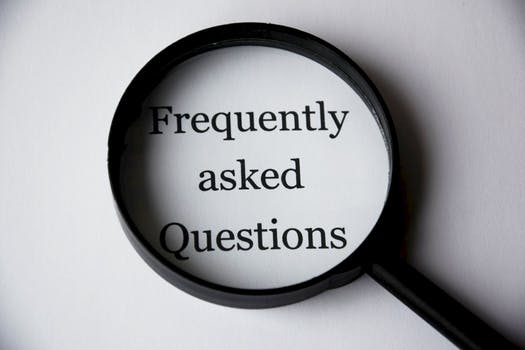TheDeveloperBlog.com
C-Sharp | Java | Python | Swift | GO | WPF | Ruby | Scala | F# | JavaScript | SQL | PHP | Angular | HTML
Ruby Substring Examples
Get substrings with ranges and indexes. Regular expressions can be used to get substrings.Negative: For a negative end on a range, we count backwards from the length of the string.
Dots: The period character is used within ranges. We can use 2 or 3 periods. If you enjoy typing periods, 3 is better.
Tip: The colon is not supported within ranges—we must use period-ranges. Otherwise the syntax resembles Python.
Ruby program that uses substring
# Index 0 = a
# Index 1 = p
# Index 2 = p
# Index 3 = l
# Index 4 = e
value = "apple"
# Get substring at indexes 0 through 3.
# ... This is the first four characters.
first_part = value[0..3]
# Get substring at indexes 3 through 4.
# ... This is the character at index 3.
second_part = value[2..3]
# Get substring past index three through end of string.
last_part = value[3..-1]
puts first_part
puts second_part
puts last_part
Output
appl
pl
le
Tip: With the comma substring syntax, we do not specify a range with two indexes. The second number is now a length (a character count).
Ruby program that uses substring comma syntax
value = "love"
# Get substring at index 1 with length 3.
# ... First argument is start index, second is length.
last_three = value[1,3]
puts last_three
# Get substring at index 1 with length 2.
middle_two = value[1,2]
puts middle_two
Output
ove
ov
Here: We specify that we want substrings that are three characters long and begin with the letter "a."
Result: The first substring expression returns "ace" which is found in "peace." The second returns "art."
Ruby program that uses regexp substrings
data = "peace"
# Get three-letter substring starting with lowercase "a."
three_letters = data[/a../]
puts three_letters
data = "part"
# Get three letter substring for a different string.
three_letters = data[/a../]
puts three_letters
Output
ace
art
Regexp pattern
a The lowercase letter "a".
. Any character.
True: In the first example, the philosopher string contains the substring "lato" so the substring test returns true.
False: When the substring is not found within the string, false is returned. In this way we search strings.
Ruby program that uses substring test expression
philosopher = "plato"
# This substring is found, so the expression returns true.
if philosopher["lato"]
puts true
end
# This substring is not contained with the string.
if philosopher["soc"]
puts false
end
Output
true
Tip: Regexp and exact strings can also be used. The matching part of the string is replaced with the specified value.
Ruby program that changes substrings
value = "coffee"
# Change range from 2 to last index.
# ... This replaces the substring.
value[2..-1] = "ugh"
puts value
value = "abcd"
# Change substring starting at index 0 with length 2.
# ... Assign a new substring.
value[0,2] = "xy_"
puts value
Output
cough
xy_cd
Ruby program that assigns substrings
value = "one one one"
# Replace first instance of this substring.
value["one"] = "two"
puts value
# A regexp also replaces the first (leftmost) instance found.
value[/o\w\w/] = "two"
puts value
Output
two one one
two two one
Regexp pattern
o The lowercase letter "o".
\w A word character (letter or digit).
Related Links:
- Ruby Convert Types: Arrays and Strings
- Ruby File Handling: File and IO Classes
- Ruby Regexp Match Method
- Ruby String Array Examples
- Ruby include: Array Contains Method
- Ruby Class Examples: Self, Super and Module
- Ruby DateTime Examples: require date
- Ruby 2D Array Examples
- Ruby Number Examples: Integer, Float, zero and eql
- Ruby Exception Examples: Begin and Rescue
- Top 65 Ruby Interview Questions (2021)
- Ruby on Rails Interview Questions (2021)
- Ruby String Examples (each char, each line)
- Ruby if Examples: elsif, else and unless
- Ruby Math Examples: floor, ceil, round and truncate
- Ruby Sub, gsub: Replace String
- Ruby Substring Examples
- Ruby Console: Puts, Print and stdin
- Ruby Remove Duplicates From Array
- Ruby Random Number Generator: rand, srand
- Ruby Recursion Example
- Ruby ROT13 Method
- Ruby Iterator: times, step Loops
- Ruby String Length, For Loop Over Chars
- Ruby Join Example (Convert Array to String)
- Ruby Format String Examples
- Ruby Copy Array Example
- Ruby Keywords
- Ruby Nil Value Examples: NoMethodError
- Learn Ruby Tutorial
- Ruby Method: Def, Arguments and Return Values
- Ruby Fibonacci Sequence Example
- Ruby Hash Examples
- Ruby While, Until and For Loop Examples
- Learn Ruby on Rails Tutorial
- Ruby Word Count: Split Method
- Ruby Sort Arrays (Use Block Syntax)
- Ruby Case Examples: Ranges, Strings and Regexp
- Ruby Array Examples
- Ruby Split String Examples